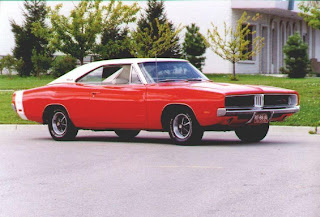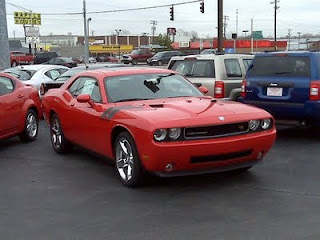Friday, May 10, 2013
Dodge Charger

The Dodge Charger is an American automobile manufactured by the Dodge division of Chrysler. There have been several different Dodge vehicles, on three different platforms, bearing the Charger nameplate. The name is generally associated with a performance model in the Dodge range; however, it has also adorned a hatchback, a sedan, and a personal luxury coupe.
The three main iterations of the Dodge Charger produced were a mid-sized (B-body) car from 1966 to 1978, a subcompact (L-body) car from 1983 to 1987 and the (LX and LY) full-sized sedan built since 2006.

The name Charger was also used in Brazil as sport car based on the Dart, between 1970 and 1980.

Charger models
1964 Dodge Charger (1964 concept): a roadster-style show car based on the Dodge Polara
1965 Dodge Charger 273: a limited production option package for the Dart GT
1966–1978 Dodge Charger (B-body): a rear wheel drive coupe and muscle car
1970–1980 Dodge Charger: Brazilian version based on the Dodge Dart,with a higher-compression 318 V8 engine
1983–1987 Dodge Charger (L-body): a front wheel drive subcompact hatchback
1999 Dodge Charger (1999 concept): a rear wheel drive concept car
2006–present Dodge Charger (LX): a rear wheel drive sports sedan.

With the failure of the 1969 Dodge Charger 500, the 1969 Dodge Charger Daytona was a high performance, limited edition version of the Dodge Charger produced in the summer of 1969 for the sole purpose of winning NASCAR races. And win it did: it won its first race out, the inaugural Talladega 500 in the fall, and helped Bobby Isaac capture the 1970 Grand National championship, although he didnt win any races in the Daytona in 1970. Buddy Baker in the #88 Chrysler Engineering Dodge Charger Daytona was the first driver in NASCAR history to break the 200 mph mark on March 24. 1970 at Talladega.

The Dodge Charger was reintroduced for 2006 with a limited production Dodge Charger Daytona package that included a sportier interior, classic high impact exterior colors, a rear spoiler, a front chin spoiler, a blacked out grille surround, rear quarter panel striping reading "DAYTONA" on either side, a blackout decal between the taillights on the decklid, and a blackout on the hood with the word "HEMI" cut out twice. Heritage R/T badges replaced the Stock R/Ts chrome badges. A performance suspension with load-leveling rear shocks was also standard, as well as unique wheels.

In 1968, Dodge watched their NASCAR inspired Charger R/T fail to beat the Ford cars on the high-banks oval-tracks. The Dodge engineers went back to the wind tunnel and found the tunneled rear window caused lift and the gaping mouth induced drag. Dodge engineers made the rear window flush with the rest of the roof and put a 1968 Coronet Grille up front. The original Charger 500 prototype was a 1968 Charger R/T with a 426 Hemi. The prototype was painted in B5 Blue with a white stripe.


Subscribe to:
Post Comments (Atom)
No comments:
Post a Comment